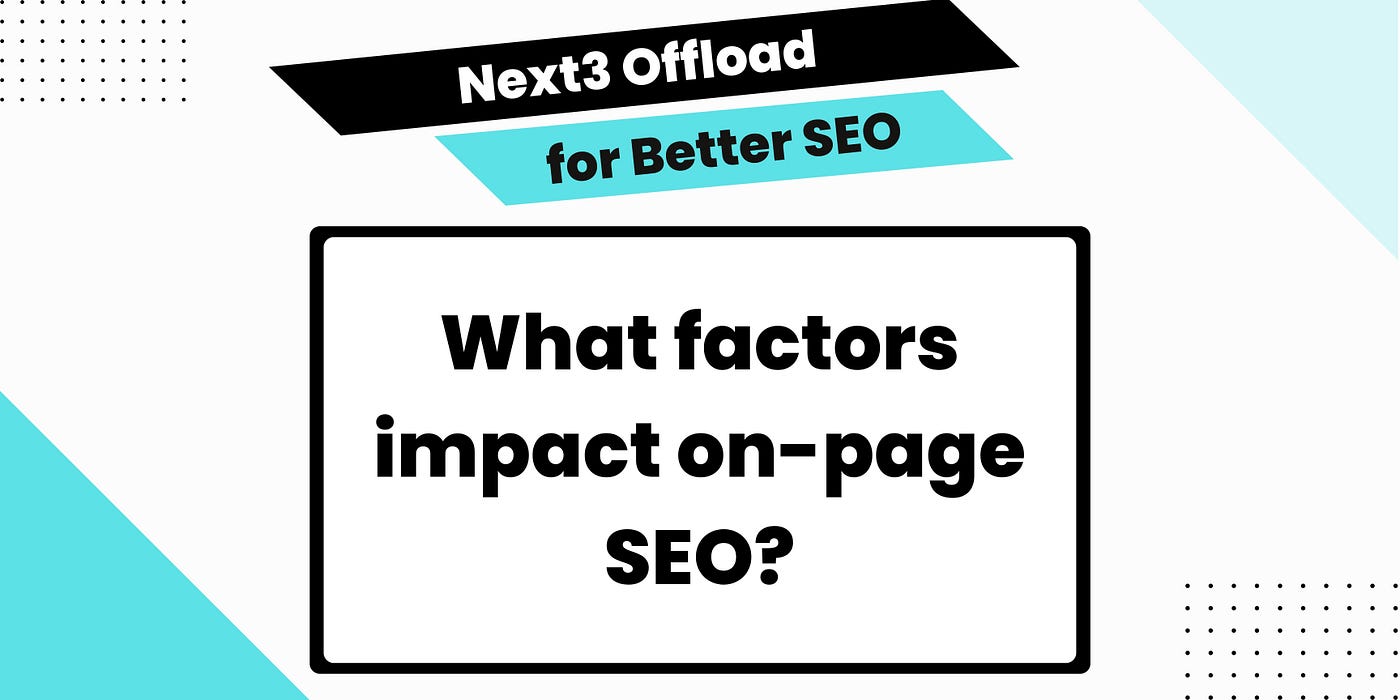What factors impact on-page SEO?
The typical online user will use a variety of search engines. The majority of us automatically use the search bar to look up information on a wide range of topics, like the number of steps in the Eiffel Tower and the distance to the closest shoe store. In actuality, organic search accounts for more than 50% of all online traffic.

SEO is crucial because all websites ultimately want to be discovered and visited. An enhanced search engine ranking can boost a website's traffic, lead creation, and conversion rates. Therefore, SEO has the potential to improve practically every element of your online marketing plan.
What is on-page SEO?
The term "on-page SEO," also referred to as "on-site SEO," requires minimal explanation. It lists every element that affects page ranking that you may change or improve on your website. These components can include pages for your products and services, landing pages, microsites, and the blog articles you produce.
Title tags, meta descriptions, heading structures, content, image optimization, accessibility, and general website efficiency are all components of on-page SEO.
Factors impact on-page SEO
The most crucial elements to focus on if you want your content to appear higher on search engine results pages and get more clicks. The following variables have an impact on on-page SEO:
Search intent : The purpose of the search is referred to as search intent. One of the most important ranking elements is it. Finding out what users are looking for when they enter a search query and then giving them that information is what search intent use in SEO entails.
Arguably the most crucial aspect of on-page SEO is search intent. After all, search engines must deliver relevant and helpful information to users at all times.
Optimizing your content for search intent comes down to looking at the search result pages for a particular query and identifying the three Cs of search intent:
- Content type — What is the dominating type of content? Is it a blog post, product page, video, or something else?
- Content format — Some common formats include how-to guides, list posts, reviews, comparisons, etc.
- Content angle — The unique selling point of the content piece, e.g., “best,” “cheapest,” and “for beginners.”
Content quality : Search intent is critical, but utilizing it won’t be enough to create “useful and compelling content.” You also need to take care of your content’s quality. Here’s what Google has to say about what it looks for in content:
It seems as though Google aims to embed the same attributes that readers value in any piece of content in its algorithms. And according to Google, it’s content that’s:
- Easy to read.
- Clearly organized.
- Fresh.
- Unique.
- Aligned with E-A-T guidelines.
- Focused on providing essential information to solve a searcher’s problem.
URLs : URLs are a small ranking factor. They bear so little weight in ranking websites that Google’s John Mueller said they are overrated in SEO and that people shouldn’t worry about them.
However, Google’s SEO guidelines mention URLs as something you should optimize. But you should do it for the user and not for Google.
Page titles : Page titles are another small ranking factor. Google uses them to understand what your page is about to better match the intent behind a given search query.
Naturally, searches use page titles for similar reasons: to understand what they can expect from a page. And so to “satisfy” both parties, you can consider these good practices:
- Make the title eye-catching and accurate — Write a line that piques users’ interest and accurately describes what’s unique about your offer.
- Insert the target keyword in your title — But you should remember to make it sound natural.
- Fit within 60 characters — Otherwise, your description may get truncated, and you’ll increase the chances of Google rewriting your title.
Meta description : Meta descriptions are not a ranking factor. But they do appear on the SERPs (right below the title of the page), so they can impact the click-through rate (CTR).
Outbound links : An outbound link is a link that points to a page that is not on your website. Outbound links are most probably not a ranking signal. This means that you probably shouldn’t try to shoehorn outbound links in your content in hopes of ranking higher.
Schema markup : Schema markup is a code that helps search engines to understand your content and better represent it in the search results. Schema markup is not a ranking factor, but applying it can help your content stand out on the SERPs.
Schema markup looks like programming, but it’s nowhere near the learning curve. Adding schema markup to a page is comparable to filling out meta tags.
Internal links : An internal link is a link from another page on the same website. Internal links are a ranking factor. Google utilizes internal links in a number of ways:
- To discover new pages — Internal links provide a crawl path to target pages.
- To pass link equity between your pages — Internal linking can boost other pages you own.
- To understand what a page is about — Understanding the content of your pages helps Google rank them. That’s why the anchor text of the internal link matters too.
You can use Next3 Offload to improve your SEO of your website.
Hope this was helpful.
Thank you.


Comments
Post a Comment